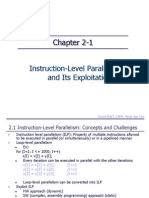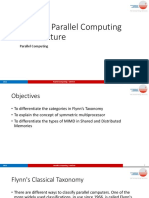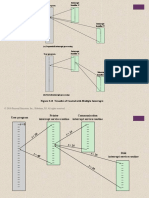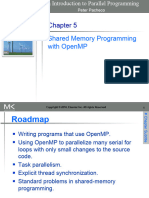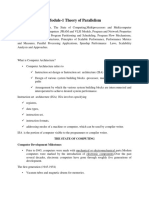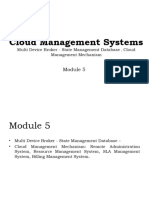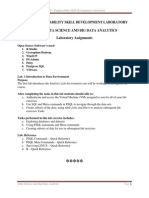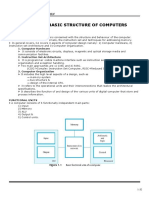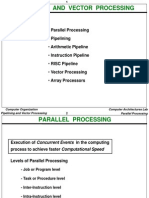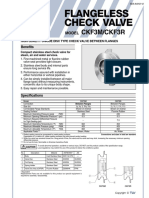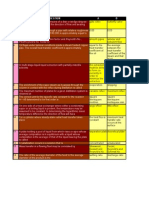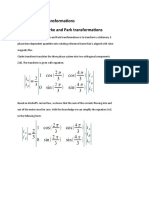100% found this document useful (1 vote)
657 views29 pagesChapter 3 - Pipelining-And-Vector-Processing
This document discusses parallel processing and pipelining in computer architectures. It describes different types of parallel processing like SIMD, MISD and MIMD architectures. It also discusses Flynn's classification of computer architectures based on instruction and data streams. Pipelining is introduced as a technique for parallel processing at the instruction level to improve computational speed. Applications of parallel processing mentioned include numerical weather forecasting, aerodynamics, and genetic engineering.
Uploaded by
tkavithaCopyright
© © All Rights Reserved
We take content rights seriously. If you suspect this is your content, claim it here.
Available Formats
Download as PPT, PDF, TXT or read online on Scribd
100% found this document useful (1 vote)
657 views29 pagesChapter 3 - Pipelining-And-Vector-Processing
This document discusses parallel processing and pipelining in computer architectures. It describes different types of parallel processing like SIMD, MISD and MIMD architectures. It also discusses Flynn's classification of computer architectures based on instruction and data streams. Pipelining is introduced as a technique for parallel processing at the instruction level to improve computational speed. Applications of parallel processing mentioned include numerical weather forecasting, aerodynamics, and genetic engineering.
Uploaded by
tkavithaCopyright
© © All Rights Reserved
We take content rights seriously. If you suspect this is your content, claim it here.
Available Formats
Download as PPT, PDF, TXT or read online on Scribd
/ 29




